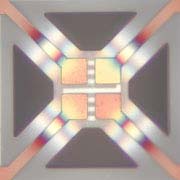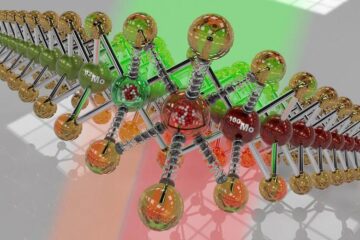Latest News

Detecting Chemical Threats With "Intelligent" Networks
Prototype microsensor arrays connected to artificial neural networks—computer models that “learn”—can reliably identify trace amounts of toxic gases in seconds, well before concentration levels become lethal, National Institute of Standards and Technology (NIST) scientists and a guest researcher reported Sept. 7 at the American Chemical Society annual meeting in New York City. The system has the potential to provide cost-effective early warning of chemical warfare agents.
Lab experiments sh

Jefferson and Brigham and Women’s Researchers Find Blue Light Important for Setting Biological Clock
Researchers from Brigham and Women’s Hospital (BWH) in Boston and Jefferson Medical College have found that the body’s natural biological clock is more sensitive to shorter wavelength blue light than it is to the longer wavelength green light, which is needed to see.
The discovery proves what scientists have suspected over the last decade: a second, non-visual photoreceptor system drives the body’s internal clock, which sets sleep patterns and other physiological and behavioral functions.

Video game used for study of human navigation
Using a video game featuring a yellow taxi, virtual city and human players with electrodes embedded in their memory banks, neuroscientists at UCLA and Brandeis University have discovered how three types of brain cells interact to help people navigate the real world.
Published in the Sept. 11 edition of the peer-reviewed journal Nature, the findings offer unique information about how human memory works and present new avenues of investigation for treatment of memory disorders such as Alzheim

Waste fiber can be recycled into valuable products using new technique of electrospinning, Cornell researchers report
It may soon be possible to produce a low cost, high-value, high-strength fiber from a biodegradable and renewable waste product for air filtration, water filtration and agricultural nanotechnology, report polymer scientists at Cornell University. The achievement is the result of using the recently perfected technique of electrospinning to spin nanofibers from cellulose.
“Cellulose is the most abundant renewable resource polymer on earth. It forms the structure of all plants,” says Margaret

AIDS development can be monitored and predicted
Total lymphocyte count and hemoglobin concentration lowers at onset of the disease
People with HIV and their physicians could have a less expensive tool to track the progression from HIV infection to AIDS. According to researchers from the Johns Hopkins Bloomberg School of Public Health, a decline in the total lymphocyte counts (TLC) and hemoglobin (Hgb) concentration in the blood may be used to monitor a patient’s disease status. Currently, HIV RNA and CD4+ cells in the blood ar

UGA researchers use transgenic trees to help clean up toxic waste site
Can genetically engineered cottonwood trees clean up a site contaminated with toxic mercury? A team of researchers from the University of Georgia – in the first such field test ever done with trees – is about to find out.
The results could make clearer the future of phytoremediation – a technique of using trees, grasses and other plants to remove hazardous materials from the soil. UGA scientists and city officials in Danbury, Conn., planted on July 16 some 60 cottonwoods with a special gene











